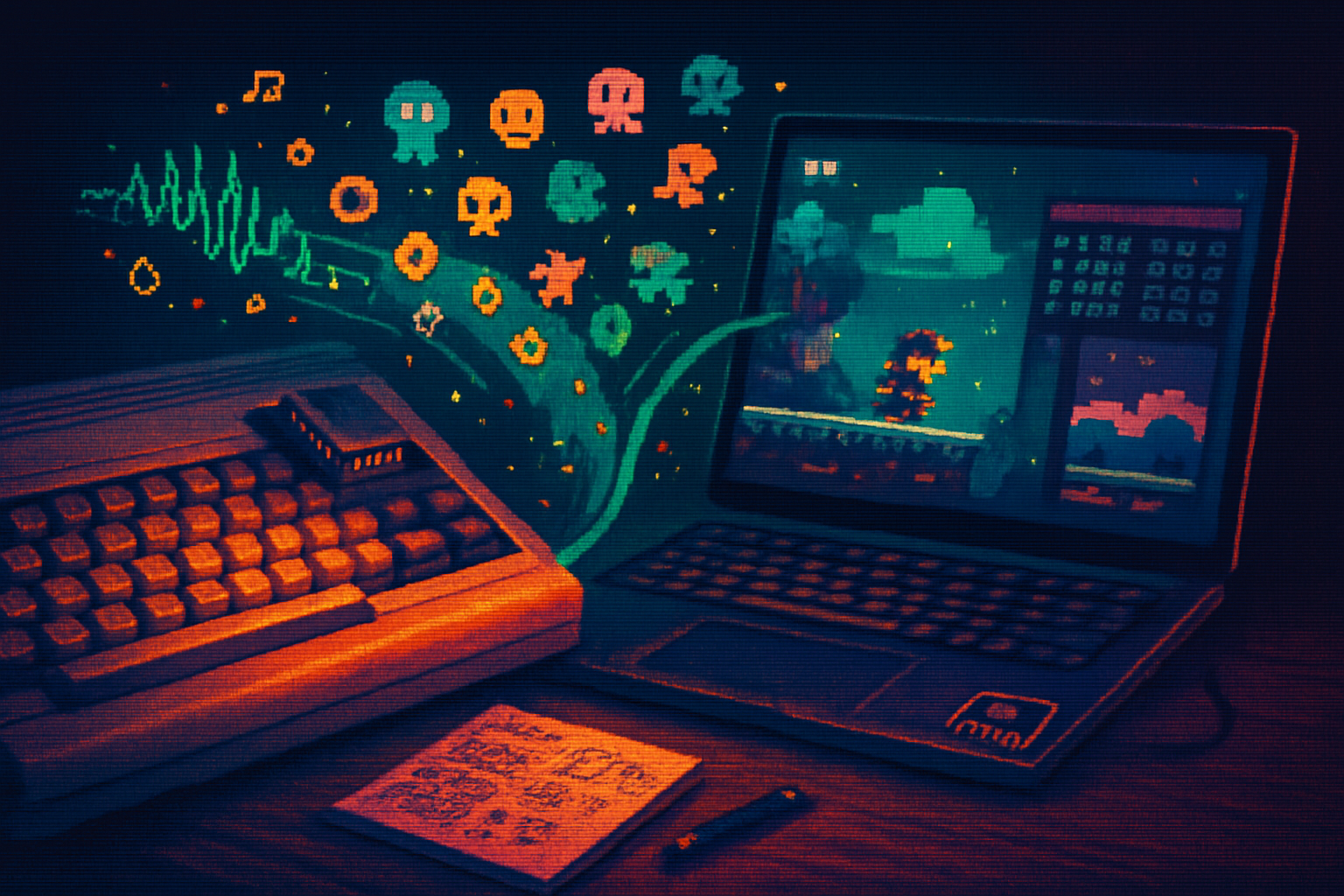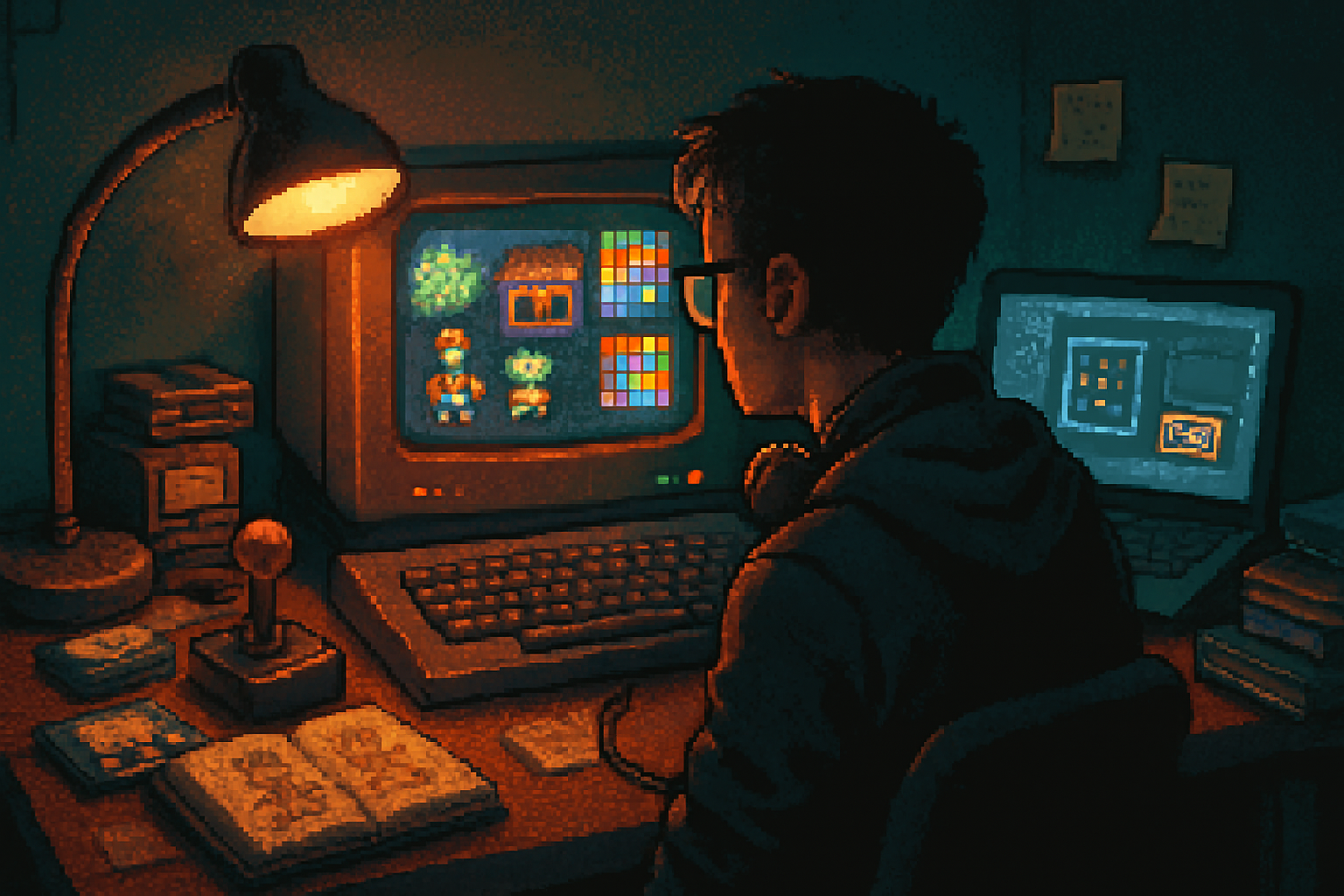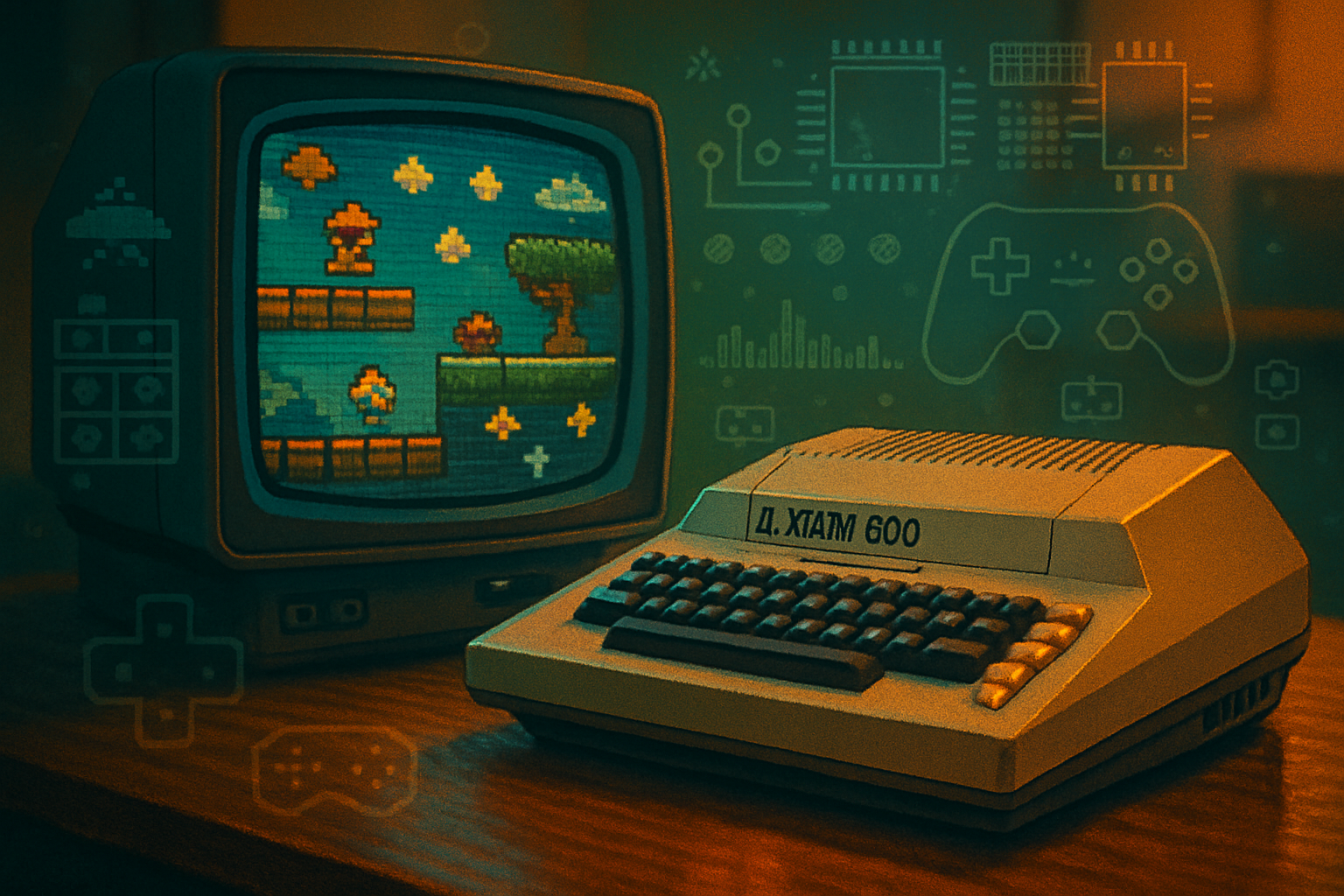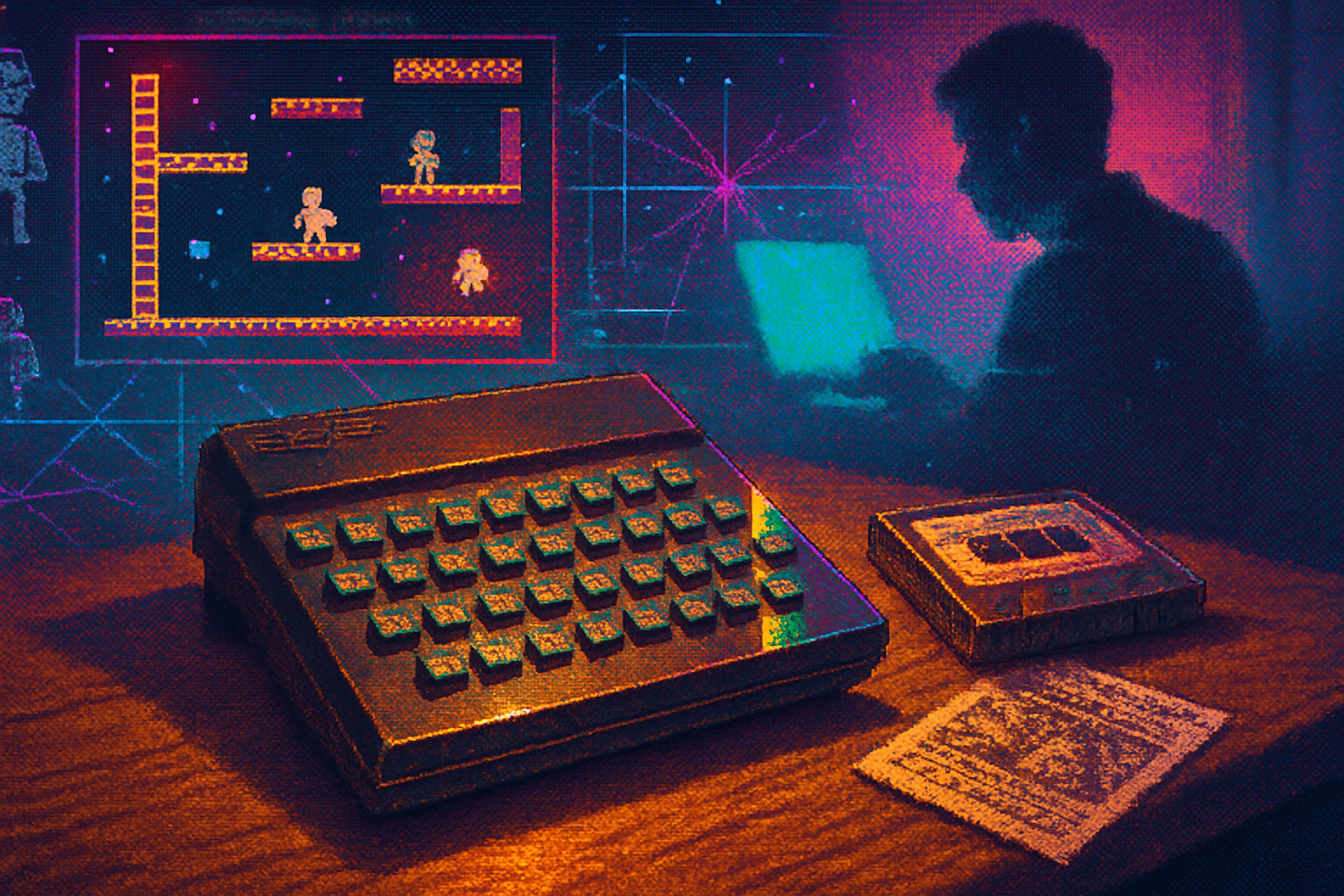· retrotech · 7 min read
The Atari ST: Redefining Retro Gaming for Modern Developers
The Atari ST's unique blend of CPU-driven graphics, a 512-color palette, and a 3-channel PSG plus MIDI connectivity shaped a generation of distinctive games. This article explores the ST's architecture, the creative techniques it forced on developers, and how modern devs can revive ST-style graphics and sound to make retro-inspired games that resonate with today's players.
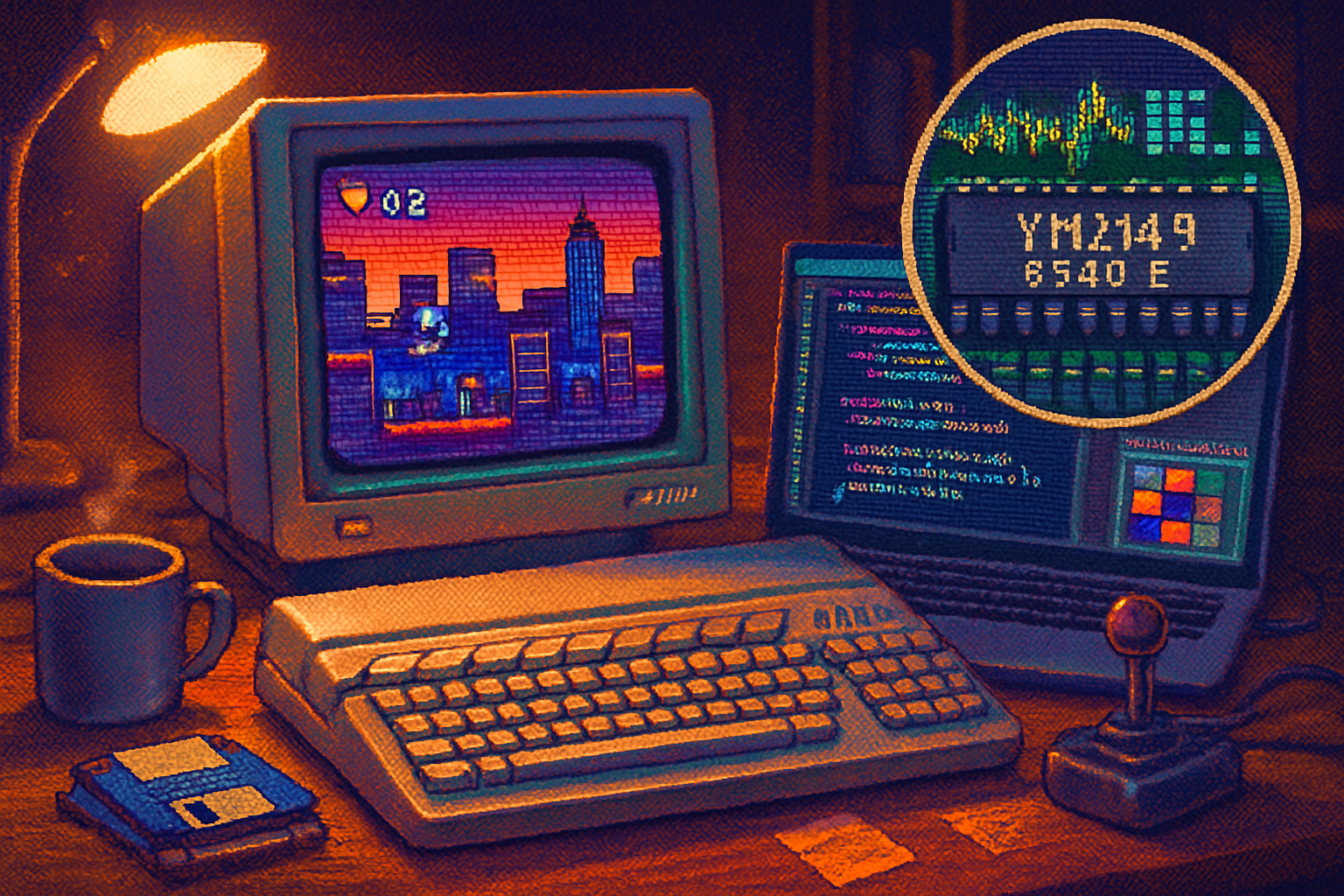
Why the Atari ST still matters to modern developers
The Atari ST is often remembered as a clean, no-frills 1980s personal computer that put powerful creative tools - notably MIDI - into the hands of musicians and hobbyist programmers. But beyond nostalgia, the ST offers a compelling set of design constraints and aesthetics that can inspire modern games: a modest CPU with no hardware sprites, a compact color palette drawn from a 512-color space, and a punchy PSG audio chip. These constraints drove clever software techniques and a signature look-and-feel that many players still find evocative.
If you make games today, deliberately adopting some of the ST’s limits can lead to striking visuals, focused gameplay, and a deeply satisfying craft process.
Quick technical anatomy (what made the ST distinct)
- CPU - Motorola 68000 at ~8 MHz - a powerful general-purpose CPU for its day (see
- Memory - Early machines shipped with 512 KB RAM (expandable to megabytes in later models).
- Graphics - The ST exposed a 512-color palette and popular modes that emphasized either color or resolution. The 320×200 mode with 16 simultaneous colors from that palette is the one most associated with games on the ST. Because the graphics pipeline lacked hardware sprites and blitters, pixel rendering and animation were largely CPU-driven (
- Sound and MIDI - A 3-channel PSG (Yamaha YM2149) for beeps and synthesized tones, plus wide use of PCM sampling tricks and a built-in MIDI interface that made the ST a music-production favorite. Read more on the PSG:
- OS/GUI - TOS and GEM provided a graphical desktop and consistent system services but were light enough for hobbyist tinkering (
These characteristics combined to produce software design patterns that emphasized CPU optimization, palette management, and creative audio engineering.
How ST constraints shaped classic games - lessons for modern design
Understanding how ST-era developers solved problems lets modern teams borrow their strengths:
- Constraint-led creativity - Limited colors and CPU power forced artists to master dithering, tile reuse, and silhouette-first design. The result: small assets that read instantly and a strong visual identity.
- Engine-level cleverness - Without sprites or blitters, programmers used software-rendered tilemaps, clever memory layouts, and incremental update strategies (dirty-rects, row-based tricks) to get smooth scrolling and parallax.
- Audio ingenuity - With only 3 PSG channels, composers layered melody and percussion, used fast sample playback for impact, or leveraged MIDI for richer arrangements on compatible hardware.
- Performance discipline - Tight inner loops in assembly, precomputed lookup tables, and fixed-point math kept games playable on modest hardware. The discipline that produced these optimizations translates well to modern tight-loop systems like physics, AI, or rendering for mobile.
These techniques are not historical curiosities - they are practical patterns for making aesthetically strong, resource-efficient games today.
Why the ST aesthetic still resonates with players
- Readability and clarity - Limited palettes and carefully designed sprites emphasize form over photorealism, which helps gameplay readability.
- Nostalgia with a twist - The sound palette of the YM2149 and the ST’s particular pixel density evoke a concrete era of gaming culture without the grime of less-refined platforms.
- Authenticity - Players who grew up with these systems appreciate authenticity - correct color choices, dithering strategies, and audio timbres sell the experience.
For indie games, that authenticity can be a differentiator in a crowded market: it signals craft and intent.
Practical ways to bring Atari ST flavor into a modern indie game
Pick your constraints and stick to them
- Resolution - Choose a native in-game resolution that echoes the ST (for example, 320×200 or a scaled multiple). Keep UI and gameplay to that grid so the pixel language remains coherent.
- Palette - Limit yourself to 12–16 colors for the game layer. Consider implementing a fixed 512-color subset if you want deeper authenticity (tools can help you curate a small palette from a larger space).
Adopt ST rendering idioms
- Tilemaps and layers - Use tile-based rendering for backgrounds; reuse tiles aggressively.
- Software raster effects - Recreate parallax, scanline interleaving, and raster splits in shaders or CPU code to simulate how ST games produced visual variety without hardware support.
- Dirty rects and incremental updates - For UI overlays or HUDs, update only what changes to mimic CPU-efficient workflows.
Recreate the soundscape
- PSG emulation - Use YM2149 emulators or YM-style VSTs to get the signature three-voice PSG timbre for leads and arpeggios.
- Samples for impact - Add occasional PCM samples for explosions and voice snippets to emulate ST-era sampling tricks.
- MIDI-inspired arrangement - Treat the music like a small ensemble; consider layering a chiptune lead, bass, and percussion to recreate the concise arrangements the ST favored.
Use modern tools that make retro authenticity practical
- Emulators for testing and reference - Hatari is a mature Atari ST emulator for reference and historical testing:
- Fantasy consoles for prototyping - PICO-8 and TIC-80 are excellent for quickly iterating on constrained aesthetics and mechanics:
- Tracking and sequencing - For authentic workflows, study early MIDI-era composition tools - Cubase started on the ST - and modern trackers or VSTs that emulate PSG chips.
Blend old and new UX expectations
- Preserve readability - Use modern accessibility patterns (font scaling, color contrast modes) even if you stick to a retro palette.
- Modern conveniences - Quality-of-life features (auto-save, customizable controls, difficulty scaling) make retro aesthetics accessible to modern players without betraying the look.
Tools, libraries, and resources to get started (curated)
- Hatari emulator - emulate Atari ST behavior: https://hatari.tuxfamily.org/
- PICO-8 / TIC-80 - constrained fantasy consoles for rapid prototyping: https://www.lexaloffle.com/pico-8.php, https://tic.computer/
- YM2149 reference and emulations - background on PSG and emulators: https://en.wikipedia.org/wiki/Yamaha_YM2149
- Motorola 68000 architecture - to understand CPU-era constraints: https://en.wikipedia.org/wiki/Motorola_68000
- Atari ST overview (hardware and modes): https://en.wikipedia.org/wiki/Atari_ST
(If you plan on targeting actual ST hardware or want deep emulation accuracy, the emulator and hardware docs above are essential reading.)
Design patterns inspired by the ST (recipes you can reuse)
- Palette-first art pipeline - Start by creating your palette, then design sprites and tiles within it. This avoids late-stage recoloring that breaks the aesthetic.
- Micro-asset reuse - Build a tile library with modular pieces - platforms, foreground props, and background tiles designed to snap together logically.
- Minimal-mix audio - Compose loops that work on three channels or simulate that constraint with layered samples. Less can be more - clarity of melody is key.
- CPU-budget planning - Even on modern hardware, plan an explicit CPU budget per frame. That leads to predictable performance and encourages elegant solutions.
How an ST revival influences the retro and indie market
- Authentic retro authenticity sells - There is a community that values faithful revivals - not just “pixel-looking” art, but pieces that follow historical constraints and techniques.
- Hybrid experiences broaden the market - Fusing ST visuals/sound with modern mechanics (physics, procedural content, online features) can attract both nostalgic players and newcomers.
- Tooling lowers the barrier - Modern engines and fantasy consoles let indie teams prototype and polish ST-like games quickly, increasing the number of quality releases in the space.
Indies that successfully channel ST ethos focus on clarity, craft, and a coherent artistic vision - rather than purely replicating low resolution or sound as ends in themselves.
Case study ideas & experiments to try this weekend
- Micro-jam - Build a one-screen platformer at 320×200 with a 16-color palette and a 3-channel chiptune loop.
- Sound experiment - Replace a modern synth line in one of your tracks with a PSG emulation and compare player reactions.
- Visual remix - Take an existing sprite sheet and reduce it to an ST-style palette, then add dither and staggered parallax.
These small experiments rapidly reveal which aspects of the ST aesthetic matter most to your players.
Closing: constraints as a creative engine
The Atari ST offers more than nostalgia - it provides a toolbox of constraints, techniques, and aesthetic signals that are still instructive. Modern engines make it easy to fake or faithfully reproduce ST behavior, but the deeper lesson is methodological: limit thoughtfully, optimize elegantly, and let the constraint guide artistic choices. For developers who want a retro look that still feels fresh, the ST is a rich source of ideas and a reminder that constraints often produce the most memorable games.
References
- Atari ST - hardware overview and history: https://en.wikipedia.org/wiki/Atari_ST
- Motorola 68000 - CPU family and characteristics: https://en.wikipedia.org/wiki/Motorola_68000
- Yamaha YM2149 - PSG used on the Atari ST: https://en.wikipedia.org/wiki/Yamaha_YM2149
- Hatari - Atari ST emulator: https://hatari.tuxfamily.org/
- PICO-8 - fantasy console for prototyping retro games: https://www.lexaloffle.com/pico-8.php
- TIC-80 - fantasy computer: https://tic.computer/
- Cubase (history) - notable ST-era music software: https://en.wikipedia.org/wiki/Cubase
